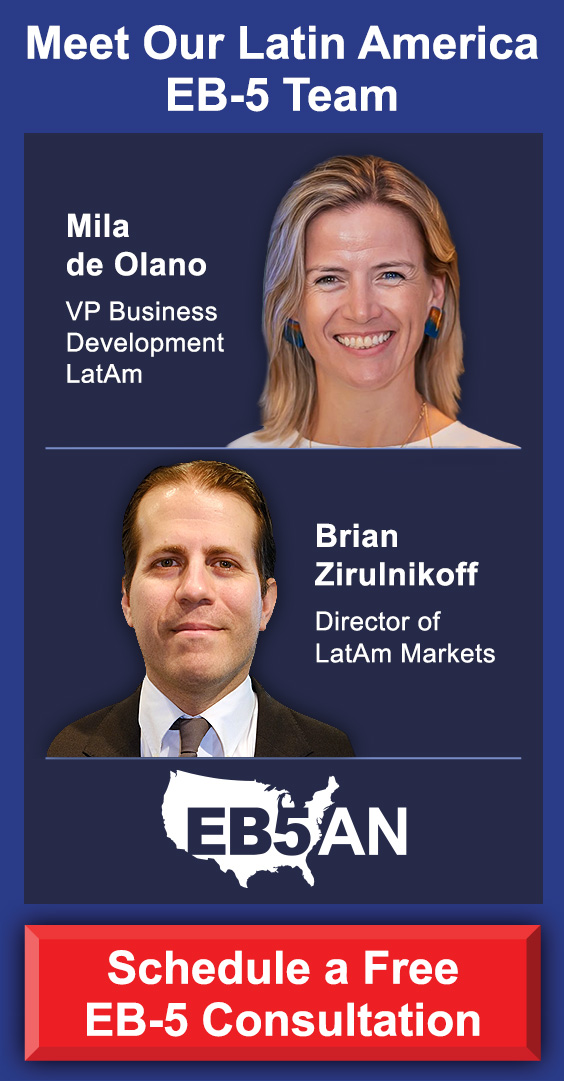In the evolving landscape of EB-5 immigration investment, artificial intelligence (AI) is becoming an indispensable tool for global investors. While the EB-5 Immigrant Investor Program has long offered a pathway to U.S. permanent residency through capital investment and job creation, it remains a complex system filled with legal, financial, and logistical variables. Today, investors are increasingly turning to AI to help make sense of this complexity, and to better evaluate the regional centers that play a central role in the program.
This article explores how AI can support more rigorous due diligence, particularly when it comes to identifying and comparing high-quality rural EB-5 investments by reputable regional centers. It also highlights the most critical questions investors should ask, how AI can help answer them, and how to interpret those answers within the broader EB-5 ecosystem.
The Role of AI in EB-5 Due Diligence
Asking the Right Questions
- What Are the Best Available Rural EB-5 Loan Investments?
- Can You Help Me Compare Regional Centers?
- Which EB-5 Regional Center Companies Have the Most Rural EB-5 Investors and Projects?
- Who Are the Regional Center Principals, and What Is Their Track Record?
- How Transparent Is the Regional Center With Reporting and Investor Communications?
Interpreting the Data: What AI Can and Can’t Do
Using AI to Make Smarter EB-5 Decisions
The Role of AI in EB-5 Due Diligence
AI is reshaping how investors conduct due diligence in sectors as diverse as healthcare, real estate, and finance, and EB-5 is no exception. With access to increasingly sophisticated tools, investors can now process vast amounts of data in seconds, identify key trends, and assess risk with greater clarity.
In the EB-5 context, AI technologies can:
- Analyze past USCIS adjudication trends.
- Extract insights from economic impact studies.
- Flag inconsistencies or red flags in offering documents.
- Compare investment opportunities across dozens of variables.
This allows investors to move beyond marketing materials and engage with EB-5 offerings in a far more objective and data-informed way.
Asking the Right Questions
The quality of AI insights depends heavily on the quality of the questions being asked. Rather than simply searching for “best EB-5 regional centers,” investors should approach the process as they would any other major financial decision, by identifying their specific goals and concerns.
Some of the most important questions in today’s market are:
What Are the Best Available Rural EB-5 Loan Investments?
Rural projects have become particularly attractive since the EB-5 Reform and Integrity Act of 2022 introduced priority processing for investments in rural targeted employment areas (TEAs). This feature, paired with the reserved visa set-asides that TEA projects benefit from, can shorten waiting times significantly and improve the chances of a successful immigration outcome.
Using AI-driven research tools, investors can compare rural EB-5 projects based on:
- TEA qualification documentation.
- Project timelines and job creation schedules.
- Capital stack and loan structure.
- Developer experience and repayment history.
One regional center that consistently ranks highly in these areas is EB5AN, which offers a portfolio of rural EB-5 loan projects vetted through independent economic studies, legal reviews, and real-time monitoring. These projects typically emphasize conservative job creation estimates, straightforward loan structures, and strong exit strategies.
Can You Help Me Compare Regional Centers?
Investors often identify several EB-5 regional centers they find promising but struggle to compare them effectively. AI makes this process easier by standardizing variables and allowing for detailed side-by-side analysis. When comparing regional centers, key metrics include:
- Track record: Approval rates, successful project completions, and history with USCIS.
- Financial management: How the company structures investments, manages funds, and reports to investors.
- Job creation record: Consistency in meeting or exceeding job creation requirements across past projects.
- Transparency and reporting: How often the center provides updates, and the clarity of its communication.
- Exit history: Whether investors in past projects were repaid as expected and how smoothly those exits were handled.
Which EB-5 Regional Center Companies Have the Most Rural EB-5 Investors and Projects?
Experience matters, particularly in a program as regulated and paperwork-intensive as EB-5. AI can be used to parse USCIS data and project filings to identify which regional centers have:
- A high volume of rural projects.
- Consistent I-526E approval rates.
- Transparent investor reporting.
- A successful history of capital return.
Deeper due diligence also requires probing into operations, compliance, and long-term outcomes. These are questions every serious investor should consider:
Who Are the Regional Center Principals, and What Is Their Track Record?
Even the best-structured EB-5 loan can fail if it’s managed by inexperienced or opaque sponsors. AI tools can analyze:
- Litigation history or regulatory violations.
- Prior EB-5 project outcomes.
- Public reviews and media coverage.
How Transparent Is the Regional Center With Reporting and Investor Communications?
Ask how often updates are provided, whether investors get access to financials or construction progress reports, and how responsive the management team is.
EB5AN stands out in this area by maintaining open investor communication channels, publishing timelines, and offering proactive status updates on immigration progress and project milestones.
Interpreting the Data: What AI Can and Can’t Do
While AI can help investors process vast amounts of information quickly, interpretation still requires context and experience. Here are a few guidelines for evaluating AI-generated insights:
Consider the Source of the Data
Make sure the documents and databases being fed into your AI tools are legitimate, such as USCIS adjudication records, audited financials, economic impact studies, and third-party due diligence reports. Avoid basing decisions solely on promotional brochures or incomplete filings.
Look Beyond the Numbers
AI may tell you that a project has a 300% job creation buffer, but what assumptions is that based on? If job creation is dependent on speculative construction timelines or aggressive revenue projections, the actual risk may be higher than the AI model suggests.
Understand the Regulatory Landscape
Even the most advanced AI tools don’t replace legal counsel. Investors must work with qualified immigration attorneys and experienced industry professionals to understand the implications of investment structure, job creation timing, redeployment strategies, and exit mechanics.
Using AI to Make Smarter EB-5 Decisions
The EB-5 program continues to offer a compelling path to permanent residency in the United States, but the quality of that path depends heavily on the investment vehicle an applicant chooses. As rural projects grow in prominence, so does the need for careful vetting, and AI provides the tools to do just that.
For those looking to combine the benefits of AI-assisted due diligence with expert project structuring and transparency, EB5AN stands out as a leading choice. We have helped more than 2,700 families from 70+ countries become lawful permanent residents of the United States. Our team has more than a decade of experience and offers clients first-rate, low-risk EB-5 regional center projects with a 100% USCIS project approval rate.
If you would like to know more about the EB-5 program, book a free call with our expert team today.











